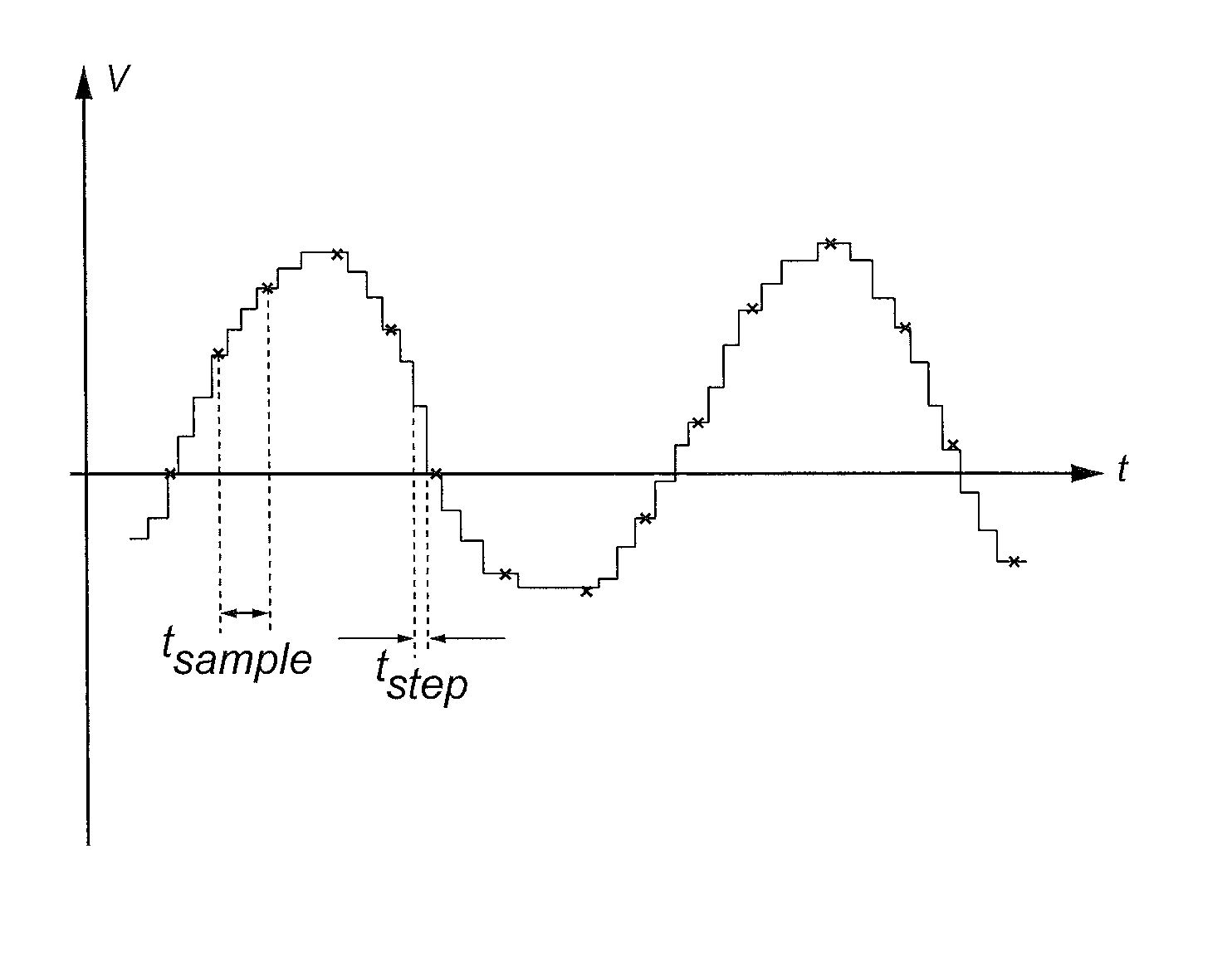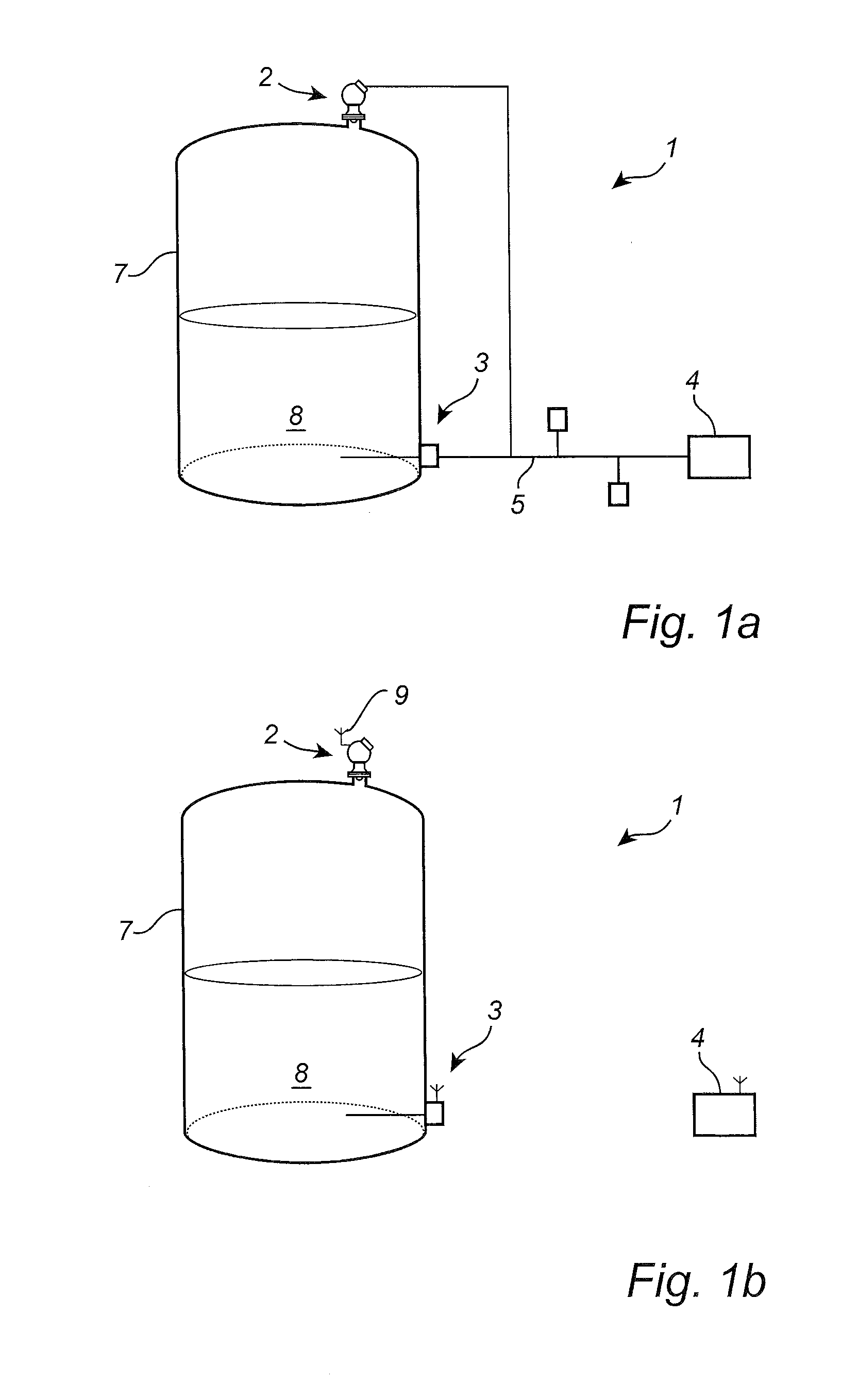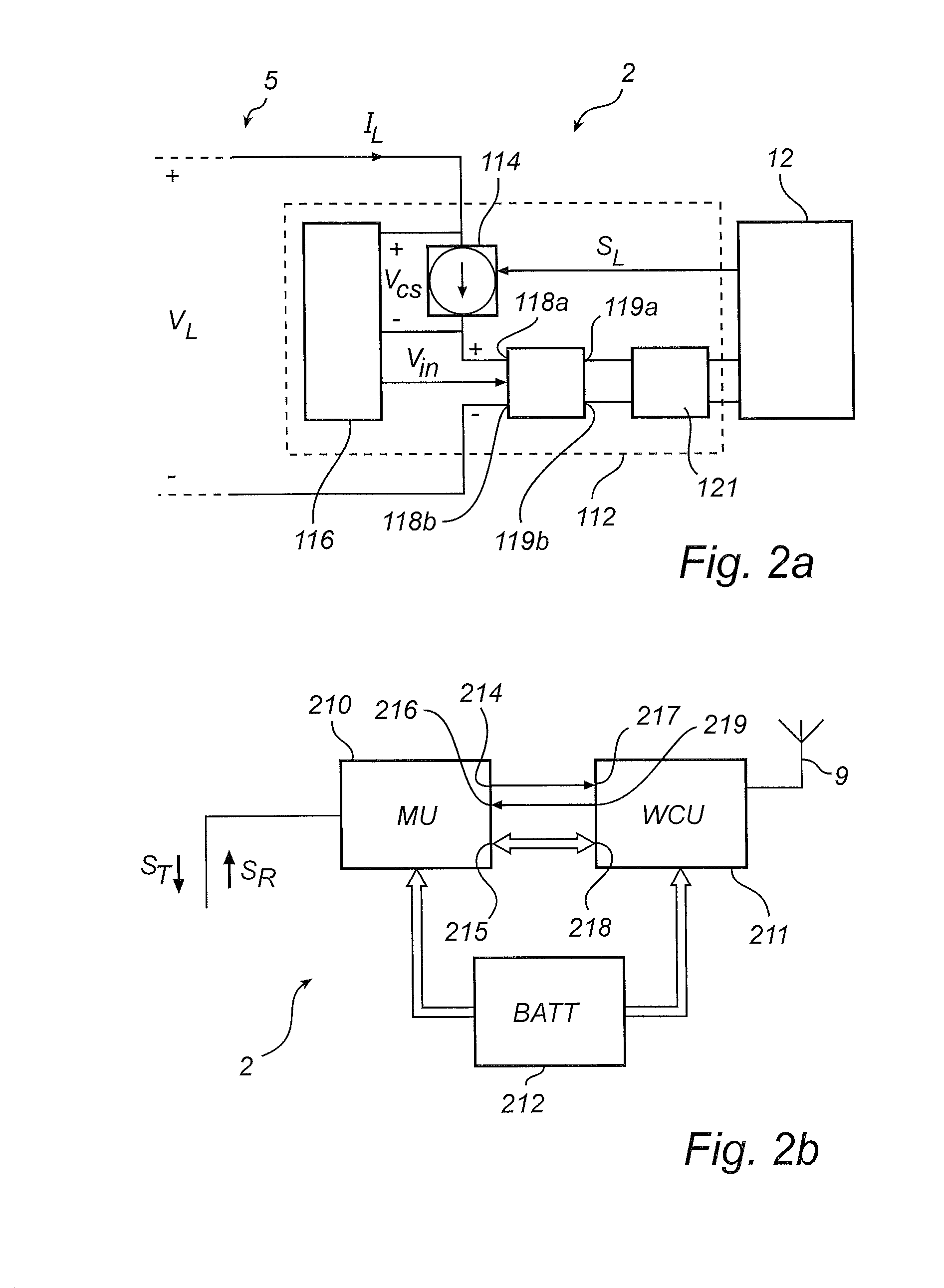Low power radar level gauge system
a low-power, radar-based technology, applied in the direction of instruments, machines/engines, using reradiation, etc., can solve the problems of increased sweep time, less suitable for applications where the power (and/or energy) is not suitable, and the integrated microwave circuit is not suited to the desired application, etc., to achieve accurate filling level determination, reduce cost, and limited supply of energy and/or power
- Summary
- Abstract
- Description
- Claims
- Application Information
AI Technical Summary
Benefits of technology
Problems solved by technology
Method used
Image
Examples
first embodiment
[0070]FIG. 1a schematically shows a process monitoring system 1 comprising a plurality of field devices, including a radar level gauge system 2 and a temperature sensing device 3 connected to a host system 4 through a communication line 5 in the form of a 4-20 mA current loop. Further field devices connected to the communication line 5 are schematically indicated as boxes.
[0071]The radar level gauge system 2 and the temperature sensor 3 are both arranged on a tank containing a product 8 to be gauged.
[0072]In addition to providing signals on the current loop, typically in the form of a current value being indicative of a measurement value, the field devices may be powered using the current provided by the current loop 5. As has been previously discussed further above in the Background and Summary sections, this severely limits the power that is available for operation of the field devices, in particular for active field devices, such as the radar level gauge system 2 in FIG. 1a.
[007...
second embodiment
[0087]With reference to FIG. 2b, the radar level gauge system 2 in FIG. 1b comprises a measurement unit (MU) 210, a wireless communication unit (WCU) 211 and a local energy store in the form of a battery 212. The wireless communication unit 211 may advantageously be compliant with WirelessHART (IEC 62591).
[0088]As is schematically indicated in FIG. 2b, the measurement unit 210 comprises a first output 214, a second output 215, and a first input 216. The first output 214 is connected to a first input 217 of the wireless communication unit 211 through a first dedicated discreet line, the second output 215 is connected to a second input 218 of the wireless communication unit 211, and the first input 216 is connected to a first output 219 of the wireless communication unit 211 through a second dedicated discreet line. The second output 215 of the measurement unit 210 and the second input 218 of the wireless communication unit 211 may be configured to handle bidirectional data communicat...
PUM
 Login to view more
Login to view more Abstract
Description
Claims
Application Information
 Login to view more
Login to view more - R&D Engineer
- R&D Manager
- IP Professional
- Industry Leading Data Capabilities
- Powerful AI technology
- Patent DNA Extraction
Browse by: Latest US Patents, China's latest patents, Technical Efficacy Thesaurus, Application Domain, Technology Topic.
© 2024 PatSnap. All rights reserved.Legal|Privacy policy|Modern Slavery Act Transparency Statement|Sitemap



